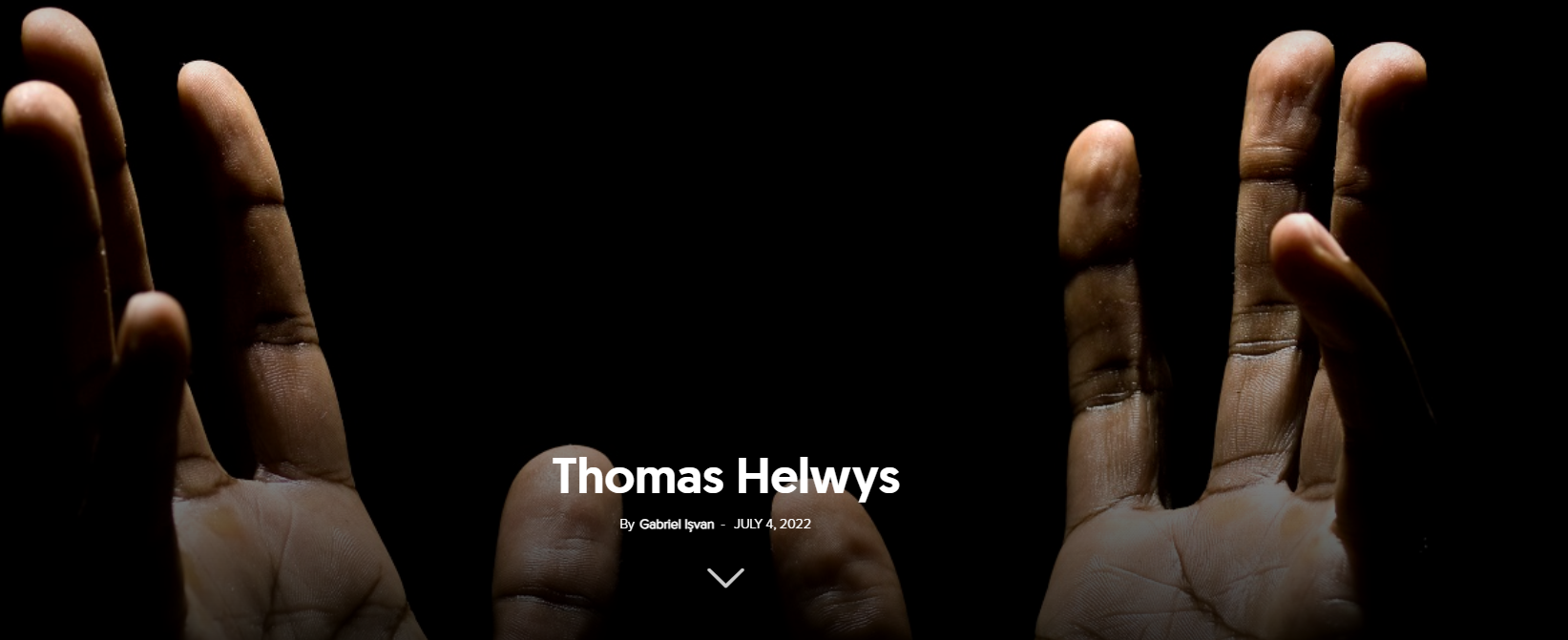Hudson Taylor undertook eleven journeys between Europe and China, and his mission prospered. He had one of the most complex and successful visions for evangelism.
The ship floated quietly on the endless water, giving the crew a chance to rest after long battles with the waves. The vessel had left Liverpool on September 19, 1853 and, after five long months it had still not reached its destination. In the distance, one could catch sight of the rocks around the shore, and the captain expected that they would easily sail past northern New Guinea to finally reach their destination.
Suddenly, however, the wind died down completely, and the ship began to be carried by the currents towards the shore in a macabre dance that could not be prevented despite all the skill of the crew. The fires of the locals on the shore were ominous, and the captain, worried, was talking to the only passenger of the ship, a thin young man of barely 22 years, confessing to him his helplessness and the imminence of disaster. The young man looked him directly in the eyes and asked him for permission to withdraw together with the other three Christians on the ship for a few moments of prayer. What followed was the final confirmation that they had to reach their destination.
The wind unexpectedly returned, and on March 1, 1854, the ship arrived at the port of Shanghai. The young passenger was Hudson Taylor, of whom it would later be said that “no other missionary in the nineteen centuries since the Apostle Paul has had a wider vision and has carried out a more systematised plan of evangelising a broad geographical area than Hudson Taylor.”[1]
Hudson Taylor was born on May 21, 1832, into James Taylor’s family. James, who lived in Barnsley, a small industrial town in central England, had met his future wife, Amelia, in 1824, the year they also got engaged. However, he waited until he could open his own pharmacy before marrying, in 1831.
After the wedding, the couple prayed specifically to God for a son and promised to entrust him to the Lord to be a missionary. Little Hudson turned out to be an intelligent and good child, managing to learn to read by the age of four and surprising those around him with an unusual dream—to become a missionary in China. This dream was mostly the result of family discussions and a book called Peter Parley’s Tales about China and the Chinese, which James Taylor’s family had learned almost by heart.
Rather sickly by nature, Hudson Taylor was mostly taught by his mother. It wasn’t until the age of 11 that he went to a public school and, for the first time, questioned his faith and God. For many years, these thoughts would constantly battle in his mind until, amazed by the wonder of God’s forgiveness and love, which he discovered in a small tract in his father’s library, Hudson decided to put his life at the disposal of this loving God and prepare to be a missionary in China. He was 17 years old and, for the first time, he knew for sure what he was going to do with his life.
However, the dream seemed overwhelming for a sickly child of a provincial pharmacist with no financial means to ensure a comfortable future. But not for his God. Hudson decided to do his part, leaving his inabilities in God’s hands.
In 1851, Hudson began to study medicine and practice dependence on God as he had seen in the life of George Müller. At that time, Müller supported 100 orphans and had prayed to God requesting that he could help 1,000. When he heard that there was a missionary in London who had just returned from China, Hudson went with his sister to meet him personally and to learn more about the territory where he hoped to arrive as soon as possible. The missionary was happy to answer his questions, but he was sceptical about the evangelistic success among the Chinese of a European with blue eyes and blond hair.
Hudson, however, did not doubt his calling. In 1852 and 1853 he continued his medical studies in London and, with the support of a missionary society, decided to finally leave for China in the autumn of 1853. Thus, on September 19, 1853, at the age of 21, Hudson Taylor boarded with the crew of the ship Dumfries and embarked on his greatest faith challenge yet.
Missionary in China
Once he arrived in Shanghai, Hudson found himself alone on the streets of an unknown city, torn by uprisings, in search of the people for whom he had letters of recommendation from London. He was shocked to learn that the missionary he was looking for had just left for America, and another, one of the very few Christians in town, had died before his arrival.
However, he found support and accommodation at a British mission, where he was received by Dr. Lockhart. He felt unexpectedly alone in a cold world, a preacher without authorisation, a doctor without a university degree, consumed by the thought of an unknown mission, surrounded by an unknown language and an incomprehensible culture.
First, he set out to learn Chinese. Every day, as he confesses in his diary, for seven hours he studied the language of the country he hoped to win over for God. He managed to make serious progress and, in the autumn of 1854, he began to wander around the city, speaking to people and relieving their pain. On December 16, 1854, he set out on his first journey to the midland of China.
On his missionary journeys, Hudson usually went with a fellow missionary and sought to relieve the pains of the locals as much as possible, without attracting attention or gathering large groups around them. They had with them small extracts from the Bible in Chinese, which they gladly offered to those interested. Correspondence with the family and missionary societies in London were the only connection with the world they had left—a world that looked at them with wonder and concern.
The news received from Europe that other missionaries were coming made Hudson and his collaborators think of a missionary centre with a school and a dispensary, a place that could then be replicated everywhere across the country. It was once again a dream of faith. The money they received from London once a quarter was not enough even for their daily food, so their clothes were worn out and their means of living very reduced. But it was not the first time that they planned by faith, nor the last time that God would help them.
In August 1855, after several missionary journeys to the midland of China, Hudson Taylor made a radical decision. In the evening he called a barber, who shaved his hair, leaving only a tuft that would be braided according to local custom, and changed his clothes. In the morning, he was unrecognisable to his fellow missionaries. He thus identified himself with the people among whom he had come, and the effects were amazing.
However, this change was not viewed favourably by his European companions, who saw in Hudson’s gesture an abdication from English dignity. However, the change for the better in the attitude of the Chinese towards him meant a joy that far outweighed the shortcomings. Later, some of his collaborators would also adopt the Chinese attire, as was the case with Burns, the famous Scottish preacher, with whom Hudson left in December 1855 for the villages of central China.
Hudson married Maria Jane Dyer, the orphan of a missionary minister in Penang, one of the largest islands in Malaysia. The first child of the new family, who was born at the end of 1858, died immediately after birth, and in 1859 Grace was born, the daughter who would bring back joy to their home and hope to their hearts.
In 1860, Hudson decided to return with his family to England, where he would succeed in translating the New Testament into a Chinese dialect, get his degree at the Royal London Hospital, write a book about China, and travel throughout England to tell people about the Chinese mission. On this occasion, he met Charles Spurgeon, the famous preacher from London, who would become his friend and supporter for the rest of his life.
Back to China
Because he could not stay away for too long from the place of his mission, in 1866 Hudson left again for China with his family. The vessel arrived in four months, which was undoubtedly a record speed for that time. The joy of seeing a growing local interest in their work was to be overshadowed by great losses: Grace died of meningitis in 1868, and two years later Hudson also parted with his wife and their last child, Noel. The death of Maria and that of the child discouraged Hudson, who felt the need to return to London for a while. It wasn’t the end of the road, however. Hudson Taylor was not defeated. In 1871 he married Jennie Faulding, also a long-time missionary in China, and together they carried the dream forward.
In 1872, the couple returned to China. Throughout his life, Hudson made eleven voyages between Europe and China, and his mission prospered. In 1885, 225 missionaries were working in the Chinese Mission, there were 59 churches and more than 1,600 local people declared themselves Christians. In 1887, Hudson Taylor prayed for 100 missionaries and $50,000. Six hundred candidates registered and more than 100,000 dollars were collected.
In 1888, while in England, Hudson was preparing to return to China, but thanks to an invitation from the famous preacher Charles Moody, he chose to make this journey passing through America. He thought it would be a short visit, but the sermons and missionary experiences aroused such interest that he stayed there for about three months. He received many donations for the Chinese Mission, although he did not ask for even a dollar from anyone. No fewer than 40 young Americans left with him as missionaries for China.
Events like this were not unique in his life. Each month of Hudson Taylor’s life brought with it a notable event. The year 1904 found him in Switzerland where his wife was receiving treatment for cancer at a sanatorium. Jennie Faulding died in 1904, and Hudson Taylor returned to China for his eleventh missionary journey. On June 3, 1905, while writing his endless correspondence, he took ill and died unexpectedly a short time later.
At the time of his death, there were 205 missionary centres in China, 800 active missionaries, 700 trained local leaders, and over 125,000 professing Chinese Christians. Today, estimates speak of over 70 million Christians in China. However, their exact number seems to be much higher, because the officially provided data includes only those from Christian churches recognised by the state. However, compared to the number of the Chinese population, Christians are a minority.
On March 17, 2009, The Gospel Herald announced the death of Reverend James Hudson Taylor III, in Hong Kong, and noted that “without regret, but driven by a deep love for China, five generations of the Taylor family dedicated their lives to the mission of Christ in China, in the last 180 years,” a beautiful fulfilment of the words of Hudson Taylor’s pledge: “As for me and my house, we will serve the Lord.”
Adrian Neagu is the editorial director of Life and Health Publishing House Romania and holds a PhD in History.




















